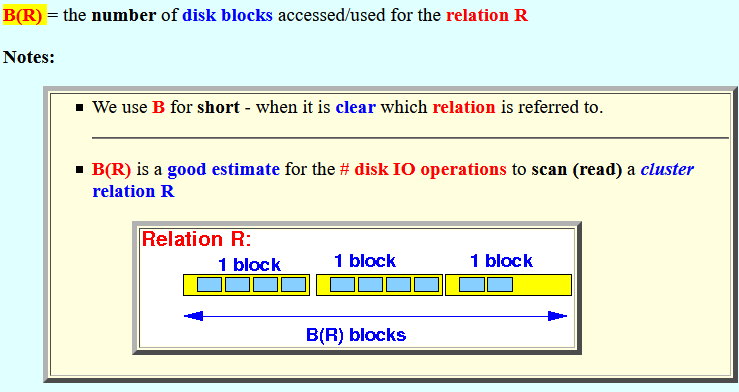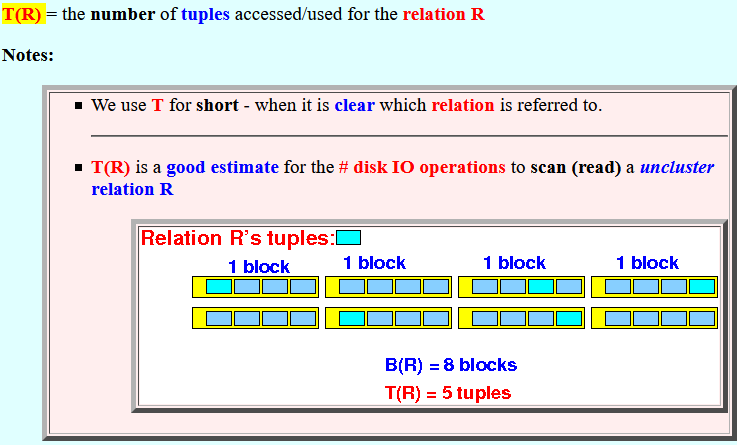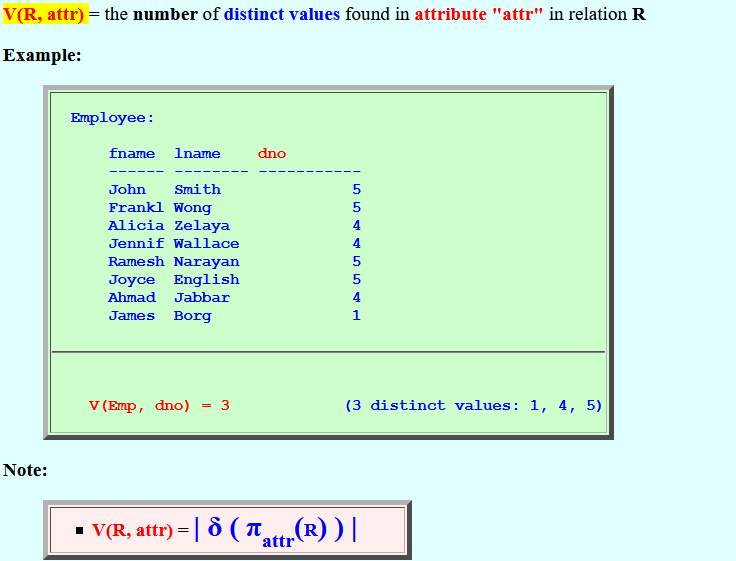Slideshow:
- Parameters to
express the
cost/constraint in
query processing:
-
M =
the number of
memory buffers in
main memory that is
available to
an operator
Note:
- We do not include the memory space used to hold the output of the operator in the calculation !!!
-
B(R) =
the number of
disk blocks
accessed/used for
the relation R
Notes:
- We use B for short -
when it is clear which
relation is referred to.
- B(R) is a
good estimate for
the # disk IO operations
to scan (read) a
cluster relation R

- We use B for short -
when it is clear which
relation is referred to.
-
T(R) =
the number of
tuples
accessed/used for
the relation R
Notes:
- We use T for short -
when it is clear which
relation is referred to.
- T(R) is a
good estimate for
the # disk IO operations
to scan (read) a
uncluster relation R

- We use T for short -
when it is clear which
relation is referred to.
-
V(R, attr) =
the number of
distinct values found
in attribute "attr" in
relation R
Example:
Employee: fname lname dno ------ -------- ----------- John Smith 5 Frankl Wong 5 Alicia Zelaya 4 Jennif Wallace 4 Ramesh Narayan 5 Joyce English 5 Ahmad Jabbar 4 James Borg 1
V(Emp, dno) = 3 (3 distinct values: 1, 4, 5)Note:
- V(R, attr) = | δ ( πattr(R) ) |
-
V(R,
[a1,a2, ..,an]) =
the number of
distinct values found
in attributes
"a1,a2, .., an" in
relation R
Note:
- V(R, [a1,a2, .., an] ) = | δ ( π a1,a2, .., an (R) ) |
-
M =
the number of
memory buffers in
main memory that is
available to
an operator




